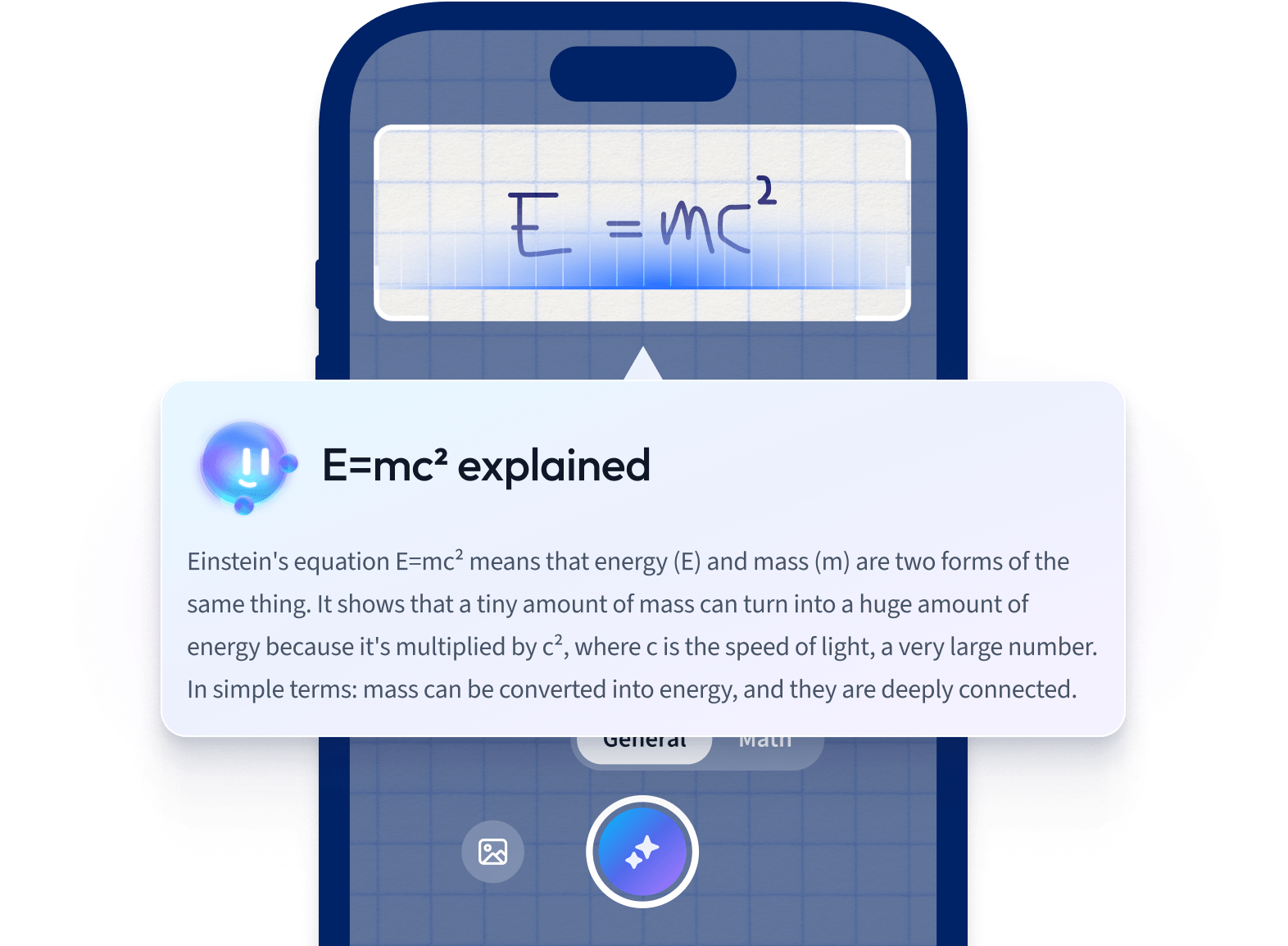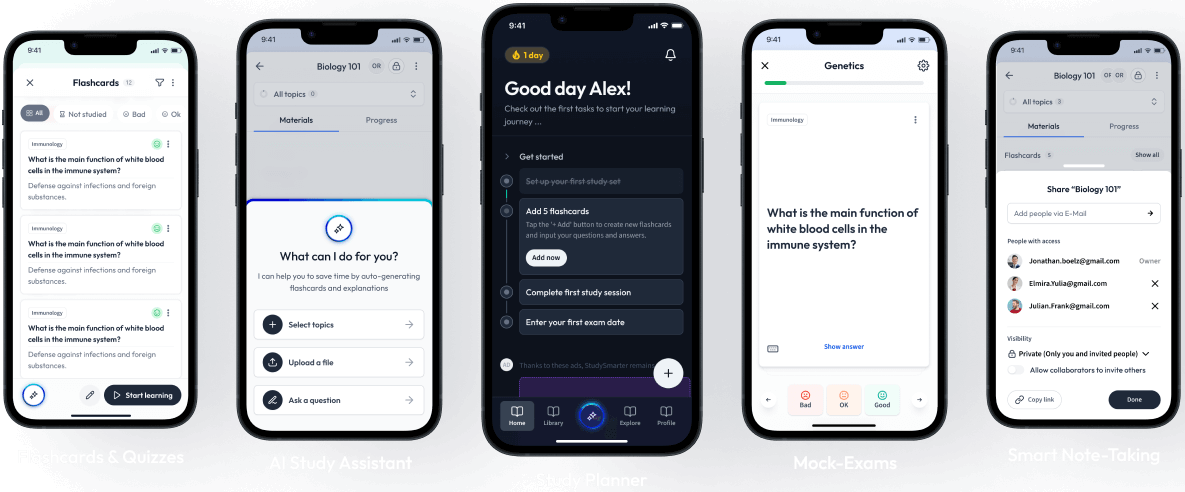In the following, we will cover what Alleles and allelic frequencies are, how they relate to our Genes, and how Genes can shape the traits and characteristics of a population.
Allele Frequencies Definition
Alleles are genes that occur at a specific location on the chromosome. Alleles can come in pairs or multiples; either way, they control the same trait. For example, in one of Mendel's pea plant experiments, the alleles were purple (PP) and white (pp). Alleles are usually either dominant or recessive.
Dominant alleles only need one copy to show up in an individual. In this case, the dominant allele is purple (P).
Recessive alleles only show up if an individual has two copies of it.
In Mendel's experiment, the recessive allele is white (p). Mendel's experiment confirmed this by crossing purple (PP) and white (pp) to get purple (Pp) heterozygous flowers, as illustrated in Figure 1.
Heterozygous individuals are individuals with two different alleles, such as Pp, in this case.
Homozygous individuals are individuals with identical two alleles or PP and pp in this case.
The definition of allele frequency is shown below. Allele frequencies tell us how common an allele is relative to the population we are interested in.
Allele frequencies can also be referred to as gene frequencies, which relate to the relative amount of an allele in a specific locus within a population.
Locus is the term we use to denote the specific location of a particular gene on a chromosome.
Allelic frequencies are usually written in percentage or fractional form. We can also think of allelic frequencies as the number of chromosomes within the population that carry a specific allele compared to the total Population Size of our sample.
Allele frequencies differ from phenotypic ratios. Phenotypic ratios only deal with phenotypes or the physically visible characteristics of organisms. In contrast, we need to consider heterozygous individuals for allele frequencies. This is because heterozygous individuals can mask recessive alleles. For instance, Pp is a heterozygous flower, but it's still purple like PP, the homozygous dominant flower.
 Figure 1: Mendel's pea plant experiment illustrated. Daniela Lin, Vaia Originals.
Figure 1: Mendel's pea plant experiment illustrated. Daniela Lin, Vaia Originals.
Allelic Frequencies in a Population
Now that we understand what allelic frequencies are, we need to go over how allelic frequencies relate to a population.
Allelic frequencies relate to population because the calculations result in fractions or percentages that demonstrate how common an allele is within a population.
In biology, a population can be defined as a group of organisms simultaneously living in the same area.
The Genotype is a set of alleles that decides a living organism's Phenotype. In the case of Mendel's pea plant experiments, the genotypes are PP, Pp, and pp. The corresponding phenotypes, respectively, are purple, purple, and white.
A genotypic population deals with a combination of allelic or gene frequencies for all the genes within the specific population we are interested in. The reason this is important to know is that without allelic frequency shifts, evolution could not occur.
Evolutions don't occur in individuals; they occur in Populations! An individual can't evolve. Instead, evolution involves gene frequencies changing within the population or gene pool.
A gene pool is all the genes and alleles combined in a population that can reproduce. Scientists study gene pools to find the degree of Genetic Variation within a population.
Allelic and Genotypic Frequencies
After understanding how alleles and genes relate to Populations, we must emphasize the difference between allelic and genotypic frequencies.
Genotypic frequencies deal with all the genotypes in the population or gene pool. In comparison, allele frequencies deal with all the alleles in the population or gene pool.
For example, if we had a population with AA, Aa, and aa individuals, the genotypic frequencies would be AA or homozygous dominant, Aa or heterozygous, and aa or homozygous recessive individuals. In contrast, the allelic frequencies are the dominant A allele and the recessive a allele.
The genotypic frequency can be found by taking the number of individuals with a particular Genotype over all the individuals within a population or gene pool.
We can figure out each genotype's frequency by dividing a particular genotype by the total individuals found in the population we are studying.
Suppose we have 1,000 individuals in total in the population; out of that, 360 are AA, 480 are Aa, and 160 are aa, as shown in figure 2.
- For AA or the homozygous dominant genotype, we can find the genotypic frequency by dividing by 360/1,000 or 0.36.
- Where 360 is the number of individuals with the particular genotype of AA and 1,000 is all the individuals within a gene pool.
- For Aa or the heterozygous genotype, we can find the genotypic frequency by dividing 480/1,000 or 0.48.
- For aa or the homozygous recessive genotype, we can find the genotypic frequency by dividing 160/1,000 or 0.16.
We can use the Hardy-Weinberg equation to calculate genotypic frequencies. The Hardy-Weinberg equation is a formula used to determine a population's genetic variation. The Hardy-Weinberg equation can be represented by \(p^2+2pq+q^2=1\). We will expand on this equation in the following sections.
Hardy-Weinberg can also help us figure out if a population is evolving or not.
A population is in Hardy-Weinberg equilibrium (HWE) when it is not evolving, and the Genetic Variation remains constant from one generation to the next.
The factors that keep a population at HWE are random mating, no mutations, infinite Population Size, no Natural Selection, and no Gene Flow.
Random mating occurs in populations that can randomly choose their mates.
Gene Flow is the transfer or exchange of genes from one population to another.
Mutations are usually changes in the DNA of a living organism.
Natural Selection usually refers to the process in which specific individuals with better traits survive and reproduce over others.
Infinite population sizes are needed to stop the effects of Genetic Drift. Genetic Drift is the change of gene frequency in a population because of random chance. Genetic drift occurs in smaller populations because they have less variation in individuals leading to less adaptation.
The reason smaller populations lose Genetic Diversity faster than larger populations is that some variants of genes can be easily lost to random chance, which can occur easier in smaller populations.
Think about two different populations of insects: one with 4 BB, 4 Bb, and 4 bb vs. 1,000 with BB, 1,000 with Bb, and 1,000 bb.
If humans or another animal were to step on some of the ladybugs accidentally, say four ladybugs, the chances of one of the variants being wiped out is easier in the smaller population than the one with 1,000 of each variant. This wiping out can be considered loss variation due to random chance.
Allele Frequency Example
Above, we went over the basics surrounding genotypic and allele frequencies. Now we'll go over an example of how to calculate allele frequencies.
We can calculate the allele frequencies of the dominant A allele by considering that homozygous dominant individuals AA make up 0.36 of the total population.
In contrast, the heterozygous individual's Aa makes up 0.48 of the total population. The dominant A allele is "100% present" in AA individuals and "50% present" in Aa individuals; therefore, the frequency of the A allele in the population is 0.36 + 0.24 = 0.6, as shown in figure 2. We get 0.24 by dividing 0.48/2.
For the recessive a allele, it's the same as how we calculated the dominant A allele, except homozygous recessive individuals aa make up 0.16 of the total population. Therefore, it's 0.16 + 0.24 =0.4 as shown in Figure 2.
 Figure 2: Genotypic and allelic frequencies related to the HWE equation. Wikimedia.
Figure 2: Genotypic and allelic frequencies related to the HWE equation. Wikimedia.
Once we've found the frequency of each genotype and the frequency of each allele in the population, we can consider the offspring of the parent generation (mother and father) by using a Punnett square.
A Punnett square is a square of calculations used to calculate all the frequencies of the different genotypes and, by extension, phenotypes of offspring that come from a cross (or mother and father mating).
The offspring receive one allele from their father and another from their mother. Figure 2 demonstrates that then the genotypic frequencies of the offspring are as follows: \(p^2 =0.36\) for AA, \(pq =\) 0.24 + 0.24 or 0.48 for Aa, and \(q^2 =0.16\) for aa.
Allele frequency formula
The formula for genotypic frequencies is \(p^2+2pq+q^2=1\) where \( p^2\) is the homozygous dominant frequency, the \( q^2\) means the homozygous recessive frequency, and the 2pq value represents the heterozygous frequency.
The formula for our allele frequencies is p+q=1, meaning that the combined two alleles, p and q, equal 1. In other words, when added up in a population, the two alleles result in a frequency of 100%. To find either p or q, we take the square root of \( p^2\) and \( q^2\), respectively.
To find p, we can also subtract q by one as p+q=1 when solved for q is p= 1-q. We usually don't calculate p first because dominant alleles can mask or hide recessive alleles in heterozygous individuals. Thus, instead of calculating p by just looking at the population, we should try to find q first and use q to calculate p.
After understanding what allele frequencies are, how they relate to populations and genotypic frequencies, and how to calculate them, we need to realize that allelic frequencies don't necessarily correlate with the fitness of an allele. For example, non-beneficial or deleterious recessive mutations can be masked in heterozygous individuals making it seem like the allele is rarer than it is in a population.
In biology, fitness refers to the reproductive success of an individual, organism, etc. The higher the fitness, the higher the reproductive success.
When we talk about fitness, what do we mean? Well, fitness relates to the reproductive success of an organism or individual. This means that fitness is essential because the greater the fitness, the greater the chances of a living organism's survival.
Survival means that you can reproduce and pass on your Genetics and traits. The longer the survival time, the more likely an organism will reach its reproductive stage and the more likely it can reproduce a couple of times.
Fitness also depends on a trait that's "overall positive", which means that features that have harmful effects can sometimes pass on as long as they somehow also confer an advantage.
For instance, we can think of sickle cell anemia being common in Africa, despite afflicting people with sickle Cells that can lead to anemia caused by insufficient red Blood cells. Sickle cell anemia is common in Africa because carriers or heterozygotes (Ss) show no signs of disease and can give you advantages to surviving Malaria, which is a major cause of mortality in the region.
Allelic Frequencies - Key takeaways
- Alleles are genes that occur in a specific location in the chromosome. Alleles can come in pairs or multiples; either way, they control the same trait.
- Allele frequencies can also be referred to as gene frequencies, which relate to the relative amount of an allele in a specific locus within a population.
- Allele frequencies tell us how common an allele is relative to the population we are interested in.
- Hardy-Weinberg can also help us figure out if a population is evolving or not.
- A population is in Hardy-Weinberg equilibrium (HWE) when it's not evolving, or the genetic variation stays constant from one generation to the next.
References
- https://www.Genome.gov/genetics-glossary/Gene-Pool
- https://www.sciencedirect.com/topics/neuroscience/hardy-weinberg-principle
How we ensure our content is accurate and trustworthy?
At StudySmarter, we have created a learning platform that serves millions of students. Meet
the people who work hard to deliver fact based content as well as making sure it is verified.
Content Creation Process:
Lily Hulatt is a Digital Content Specialist with over three years of experience in content strategy and curriculum design. She gained her PhD in English Literature from Durham University in 2022, taught in Durham University’s English Studies Department, and has contributed to a number of publications. Lily specialises in English Literature, English Language, History, and Philosophy.
Get to know Lily
Content Quality Monitored by:
Gabriel Freitas is an AI Engineer with a solid experience in software development, machine learning algorithms, and generative AI, including large language models’ (LLMs) applications. Graduated in Electrical Engineering at the University of São Paulo, he is currently pursuing an MSc in Computer Engineering at the University of Campinas, specializing in machine learning topics. Gabriel has a strong background in software engineering and has worked on projects involving computer vision, embedded AI, and LLM applications.
Get to know Gabriel













